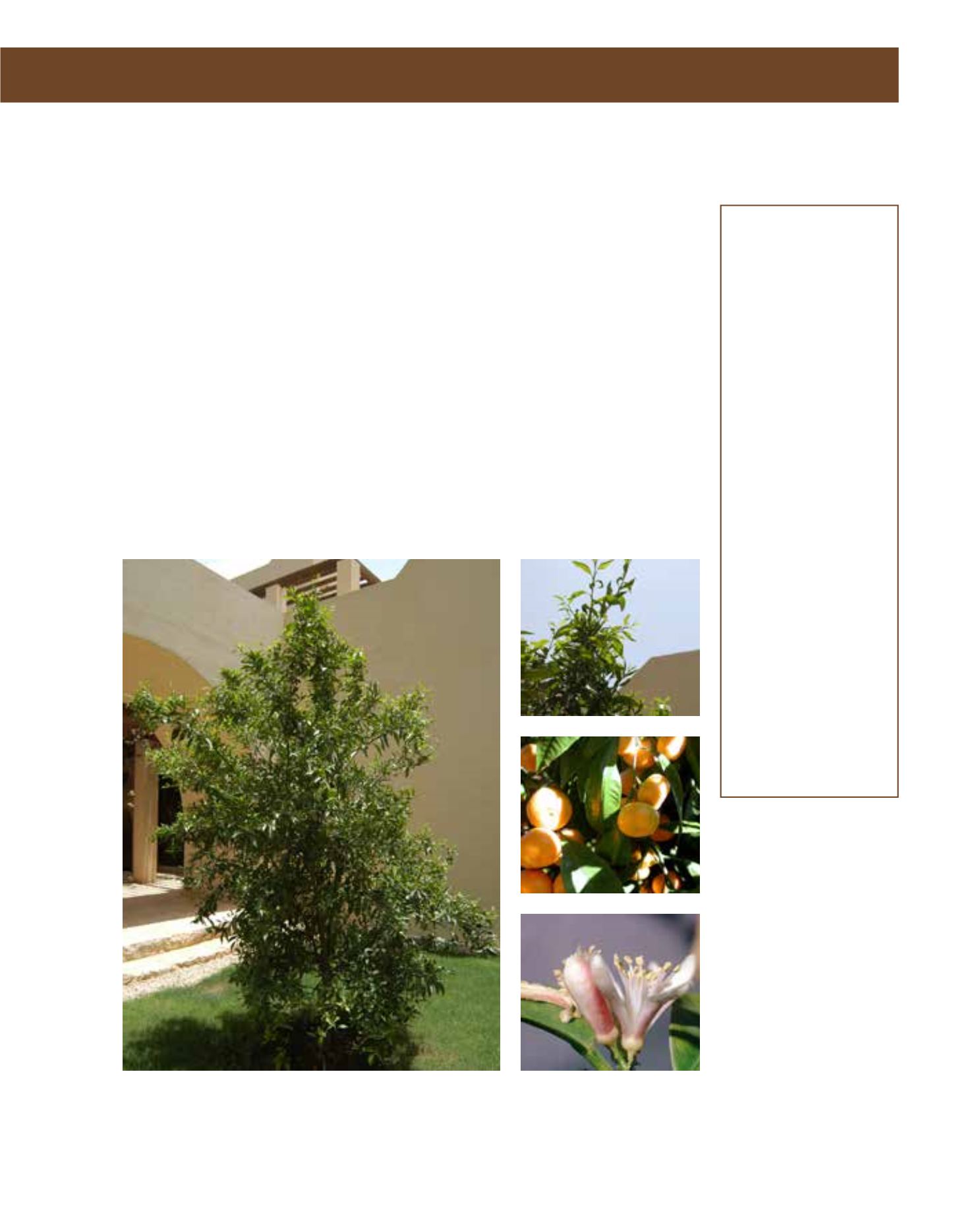

GENERAL
Origin
:
Mediterranean,
sub-tropical
Vigour
:
normal growth
rate
Humidity
:
semi-arid, semi-
humid
Propagation :
sowing and
pricking out,
cuttings
Maintenance :
high
CONDITIONS
Urban climate :
vulnerable
Dessication :
vulnerable
Stagnant water :
vulnerable
Irrigation
:
medium
Salinity/ppm :
low (1000 ppm)
Hardiness
:
-3°C
SHAPE
Type
:
tree, shrub
Height
:
3 m-5 m
Spread
:
3 m-7 m
Foliage
:
evergreen
FLOWER
Colour
:
white
Size
:
2 cm - 3 cm
Period
:
March - May
Smell
:
scented,
moderate, leaf,
flower, fruit,
sweet, fruity
FRUIT
Type of fruit :
berry
Fruit size
:
5 cm - 6 cm
Toxicity
:
edible
This is the medium-sized, evergreen tree that bears tangerines: it grows to a height of 5 metres,
and up to 7 metres in width. Once native to southeast Asia, C. reticulata is now grown in any
warm climate in the world. Tangerines are an important cash crop and are easier to peel than
other citrus. The open crown is covered with shiny, oval leaves with serrated margins and winged
petioles. They are dark green and aromatic when touched or crushed. In spring, pink buds open
to white flowers that exude an strong, sweet fragrance. After pollination by honeybees, the tree
bears the well-known, tasty fruits with bright orange rind in a flattened, round shape. Many culti-
vars vary in fruit size, yield, fruit colour, taste and number of seeds. Widespread are ‘Clementine’,
‘Dancy’ and ‘Fremont’, which are usually grafted onto stock that tolerates adverse conditions. The
fruit ripens in winter, which makes them highly popular when there are no fruits harvested in
cold or temperate climates. Yields vary from heavy crops one year to minimal performance the
next year. Full to partial sun is ideal with additional irrigation in summer, but less in winter. The
most serious pest to citrus are leaf miners. Mechanical methods to get rid of the larvae that live
within the leaf are impossible, and chemical treatment is highly elaborate but often unsuccessful.
Prevention is the best way to avoid infestation, so that each new citrus tree must be carefully
examined before planting.
108
Citrus reticulata,
Rutaceae
Tangerine
















